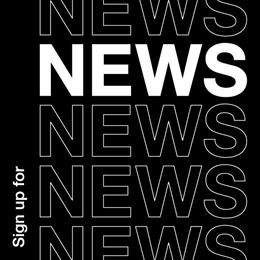Angus’ A-Z of logos: Kodak

Pentagram partner and creative director Angus Hyland discusses Kodak’s modern logo and how nostalgic sentiment inspired it.
In the final episode of the first series of Mad Men, Don Draper is pitching to the executives from Eastman Kodak, who are looking for a name for their new rotating 35mm slide projector. Draper gives a masterclass of a presentation that features heartwarming shots of his perfect nuclear family. He likens the new product to a ‘time machine’ taking us “to a place we ache to go again”, names it the ‘Carousel’ and brings the grown men in the room to tears.
He kicks things off by saying that while ‘the new’ was the thing that draws people in, there is another way that customers can develop a deeper bond with a product. “Nostalgia,” he insists, is “Delicate… but potent”.
A company with a rich history, Kodak is synonymous with film and photography and completely dominated the home photography market for the best part of the 20th century. For the first time, photography was available to the masses, through innovations such as Kodak's affordable Brownie and Instamatic cameras.
However, market leaders aren’t always able to pivot quickly, and the digital revolution in the 1980s wasn’t kind to Kodak, which went into a slow decline. The company that emerged from bankruptcy in 2012 was quite a different beast, concentrating mainly on digital printing but still supplying most of the film used by the American motion picture industry.
Kodak’s logo has been through a few changes over the years, however, the current incarnation (designed in 2016 by NYC agency Work-Order) looks very familiar. It’s a variation of the yellow and red Kodak logo that was in place for over thirty years from the early 1970s onwards, brought up to date with the perfect combination of finesse and nostalgia. The new logo retains the original's distinctive ‘K’ shape, created by the convergent angles, and reminiscent of a light source, or the visual representation of a camera click.
As Don Draper so eloquently pointed out, nostalgia is a powerful thing — especially where brands are concerned. It’s no surprise that for companies that have experienced financial ups and downs, there’s a hesitancy to take risks. When they're looking to the future, many just can’t resist the temptation to look back.
As Kodak’s CMO Steven Overman stated in 2016, “I don’t think of what we’re doing as ‘bringing back’ the iconic identity of Kodak, because in people’s hearts and minds, I don’t think it really went away. It’s simply logical to keep one of the world’s most famous brand marks at the forefront of the company’s image and identity.”
What it boils down to is the comfort factor. Far from breeding contempt, in the world of branding familiarity is half the battle when it comes to convincing customers. In fact, pretty much the whole of the advertising world is based on achieving it.
There might not be too many companies who will have to worry about this dilemma though, because, as Amazon boss Jeff Bezos recently told his employees, the lifespan of a large company typically spans 30-plus years, not 100-plus years. This was followed by a statement about Amazon’s eventual demise that was clearly designed to encourage clicks: “I predict one day Amazon will fail. Amazon will go bankrupt.”
While it seems unlikely that Bezos’ prediction will happen anytime soon, it’s worth remembering that in the 1990s, The Eastman Kodak Company was valued at a cool $31 billion.
Next time: a logo that can be painful under foot

Angus' favourite 'J' logo can be found here.













